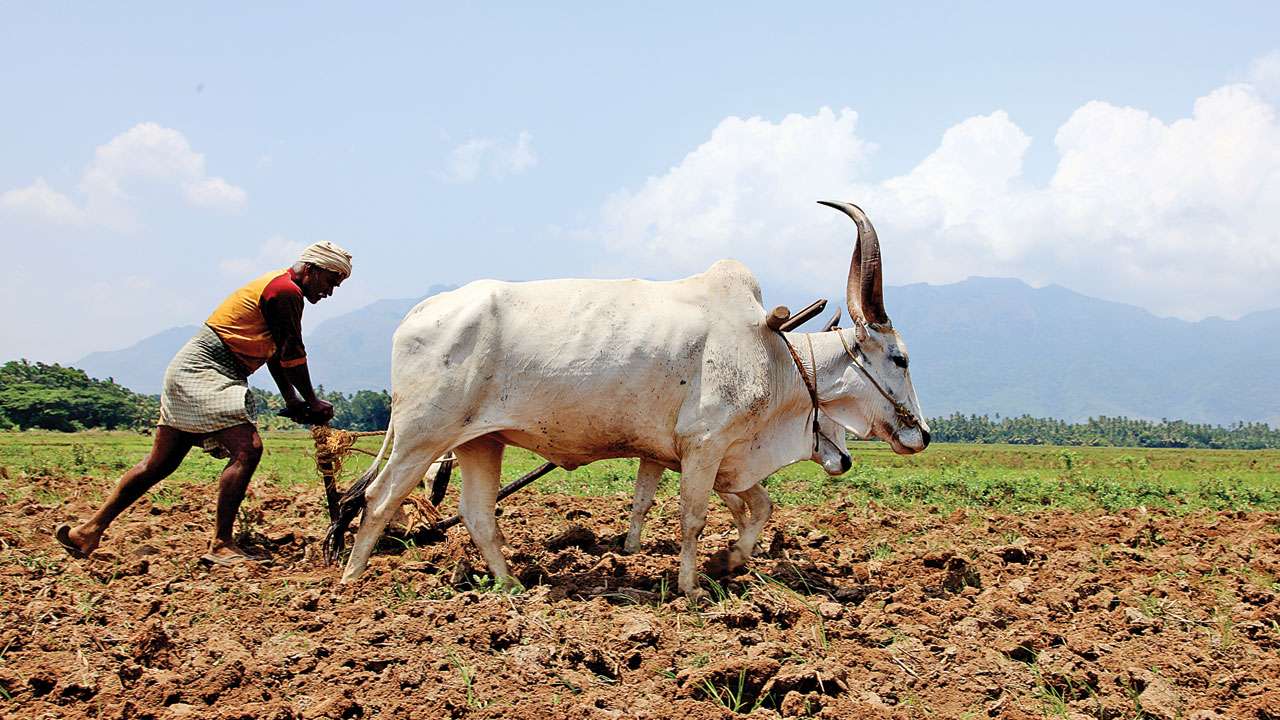
To win the 2019 Lok Sabha election, Prime Minister Narendra Modi has to overcome three demographic roadblocks: farmers, Dalits and NDA allies. Of the three, farmers hold the key.
Over 50 per cent of Indians earn their livelihood from farming activity. Agriculture, though, contributes only 15 per cent to India’s GDP. In those dissonant numbers lie the farm distress that has been building for years. It has come to a head just before the 2019 general election.
Natural disasters like successive droughts have pushed many marginal farmers to the brink. The political solution of granting loan waivers to alleviate farmer distress is akin to administering a painkiller. The pain will return. Last week former RBI governor Raghuram Rajan and 12 other leading economists released a document titled “An economic strategy for India.” The document focuses on macro-economic stability, jobs, health, education and – most emphatically – agriculture. Arguing specifically against farm loan waivers, Rajan declared: “I have said forever that farm loan waivers should be taken off the table.”
Most Indian farmers have small holdings of between one and four acres. The increase in minimum support price (MSP) to cost-plus-50 per cent is not a panacea. The formula to compute input costs itself is inaccurate as Ashok Gulati and Tirtha Chatterjee, writing in a daily, have pointed out: “Farmers are basically demanding three things: One, a debate in Parliament to discuss farm distress; two; a one-time loan waiver; and three, raising minimum support prices (MSPs) to 50 per cent above comprehensive cost (C2) of production, and making MSPs legally binding on private traders – that is, if any trader buys below MSP, he should be put in prison for, say, three years. The third demand, of setting higher MSPs and making them legally binding, is the most strange. Although the Modi government is already drum-beating that they have fulfilled the Swaminathan formula by giving a 50 per cent margin over A2+FL, people in this business know that they have changed the reference cost from C2 to A2+FL, which is about 38 per cent lower. In any case, an MSP formula based on just cost, be it A2+FL or C2, ignoring its demand side, is patently inefficient. It will cost the nation heavily in due course.”
The real solution to farm distress lies elsewhere: technology and open markets. Between farm and fork are middlemen. They suck away a significant portion of the difference between the price at which the farmer sells his produce and the price the consumer pays. Ideally, this shouldn’t exceed 15-20 per cent, giving mandi operators, wholesalers and retailers sufficient profit margins. In reality, the margins can exceed 50 per cent. The farmer is shortchanged and the consumer too pays more than she should.
This defective mechanism lies at the heart of why agriculture is an unremunerative occupation. Surveys show that over 75 per cent of the children of farmers don’t want to be farmers. The monopolistic Agriculture Produce Market Committee (APMC) decides the price farmers receive. Farmers who recently marched through Mumbai and Delhi want to sell their produce in open markets. An MSP-plus 50 per cent formula helps neither marginal farmers nor the government which has to balance food inflation (currently negative) with giving farmers remunerative prices.
The Telangana model is to bypass MSP+50 per cent and hand out Rs 4,000 per acre for every cropping season. But handing out cash to big farmers with tens of acres of land would be a waste. Former Finance Minister Yashwant Sinha instead suggests a more pragmatic way forward: “All small and marginal farmer households, including tenant and sub-tenant farmers, should receive a basic income of Rs 6,000 per acre per crop season. This will work out to Rs 12,000 per household per annum. Farmers holding land in excess of 5 acres of irrigated land, who produce disposable surplus and take advantage of the minimum support price may not be included in the scheme. For unirrigated holdings, the limit could be 10 acres. The total financial burden of this scheme, likely to be Rs 1.84 lakh crore, could be distributed in the ratio of 70:30 between the Centre and the states. The financial burden on the Centre will thus be Rs 1.29 lakh crore, less than 1 per cent of the country’s GDP. The total expenditure budget of the Government of India in 2018-19 is Rs 24.42 lakh crore. It is, therefore, not difficult to find this money within the resources available to it with better expenditure management.”
The second step that can bring about a new green revolution and increase yield-per-acre of crops as China, the European Union (EU) and the United States have done is fast-tracking genetically modified crops. This has been strongly opposed but the science is increasingly clear: properly monitored, genetically modified crops can significantly increase yield per acre. By using the benefit of agricultural technology and allowing farmers to sell in open, transparent mandis, the vicious cycle of drought and farmer indebtedness can be converted into a virtuous cycle of high-yield crops and a market-discovered price for farmers’ produce. It could win back for Modi the confidence of a farming community that has long suffered economic distress.
Author is a well-known writer